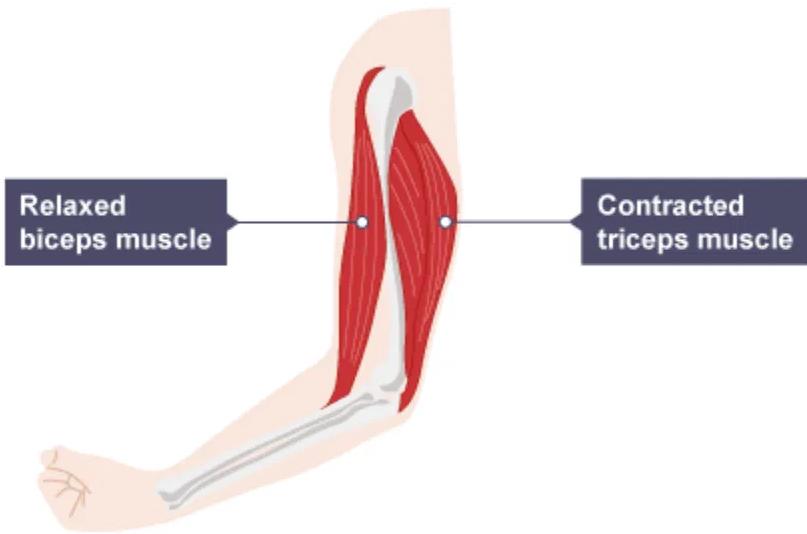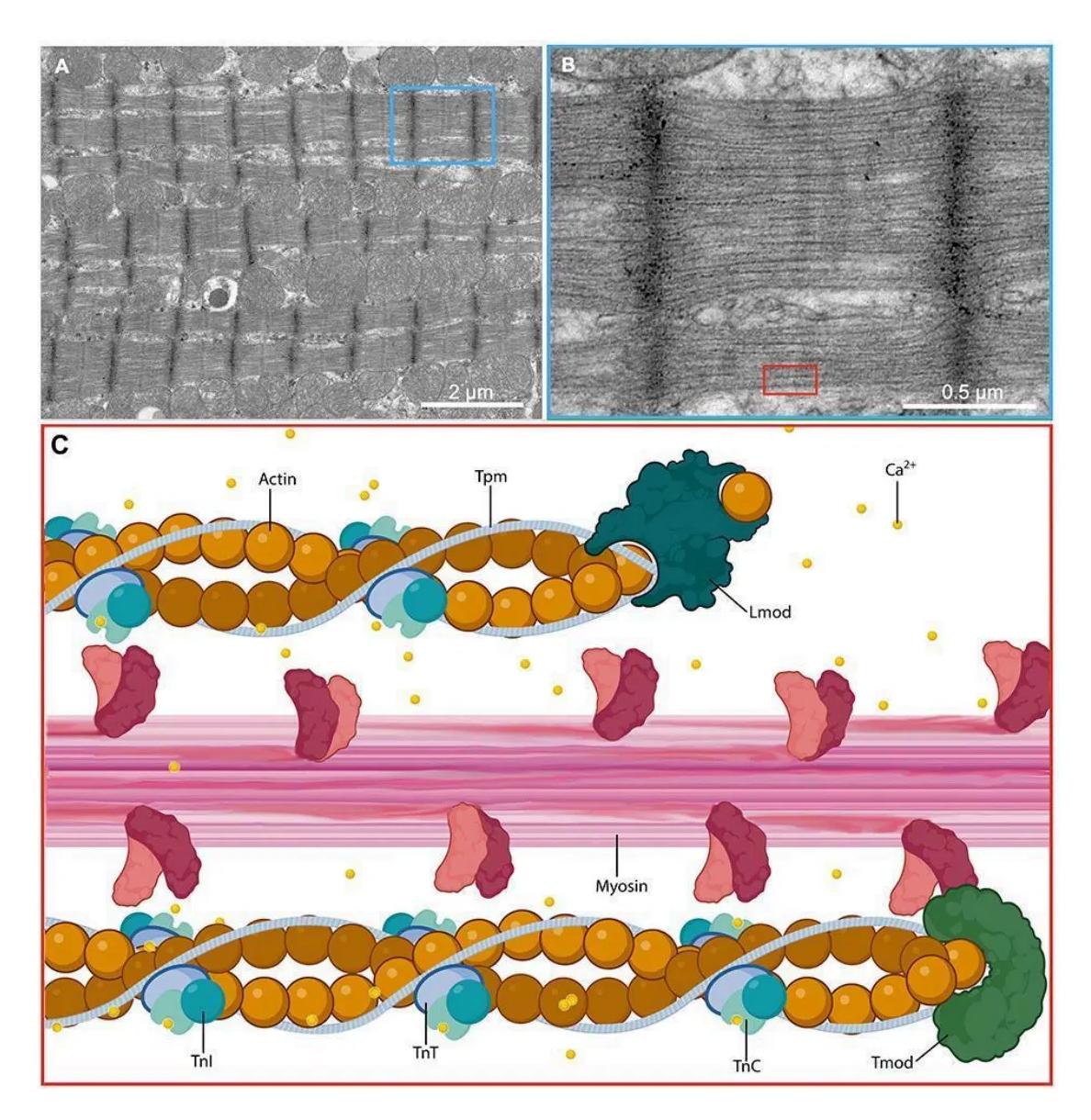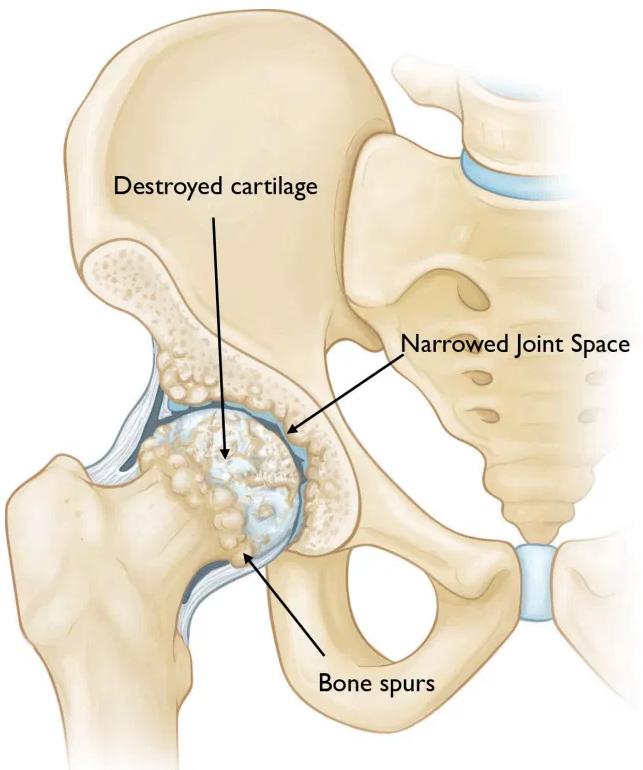Practice B3.3 Muscle and motility (HL) with authentic IB Biology exam questions for both SL and HL students. This question bank mirrors Paper 1A, 1B, 2 structure, covering key topics like cell biology, genetics, and ecology. Get instant solutions, detailed explanations, and build exam confidence with questions in the style of IB examiners.
| Sarcomere Region | Resting Length (μm) | Contracted Length (μm) |
|---|---|---|
| A-band | 1.8 | 1.8 |
| I-band | 0.7 | 0.4 |
| H-zone | 0.4 | 0.1 |
Based on the data, which conclusion best supports the sliding filament mechanism?
Refer carefully to the specific arrangement and position of the biceps and triceps in the image.

Which change would be observed in the diagram if the forearm were raised instead of extended?
Muscle fibres appear larger than most other cells. Which of the following explains this?
Table: The table below shows average range of motion (ROM) for the human hip joint measured using a goniometer.
| Movement | Average ROM (degrees) |
|---|---|
| Flexion | 120 |
| Extension | 20 |
| Abduction | 45 |
| Adduction | 30 |
| External Rotation | 60 |
| ---------------------- | ---- |
| ---------------------- | ---- |
Figure: Diagram showing the structure of a healthy human hip joint, including the pelvis, femur, joint capsule, ligaments, articular cartilage, and synovial fluid.

Using the table, deduce which hip movement has the smallest range of motion and one anatomical reason why this movement is limited.
List two components from the figure that function to reduce friction and protect joint surfaces.
Explain how ligaments and the joint capsule contribute to the stability of the hip joint without preventing mobility.
A researcher compares hip joint range of motion in two populations: sprinters and elderly adults. Predict two differences the researcher might observe and explain the biological reason for each.
Figure 2 a: Electron micrographs and schematic diagram showing sarcomere structure in cardiac muscle.

Figure 2 b: Table summarizing the frequency of mutations in genes encoding cardiac contractile proteins and their associated cardiomyopathies.
| Gene | Protein | Percent of HCM cases | Percent of DCM cases | Percent of RCM cases | Associated Cardiac Diseases |
|---|---|---|---|---|---|
| TNNT2 | Troponin T | 5-15% | 3-6% | 3-8% | HCM, DCM, RCM, LVNC |
| TNNI3 | Troponin I | 5% | <1% | 3-17% | HCM, DCM, RCM |
| TNNC1 | Troponin C | 1% | 1% | Unknown | HCM, DCM, RCM |
| TPM1 | Tropomyosin | 5% | <1-2% | 3% | HCM, DCM, RCM, LVNC |
| ACTC1 | Actin | <5% | <1% | 8% | HCM, DCM, RCM, LVNC, ASD |
- HCM: Hypertrophic Cardiomyopathy
- DCM: Dilated Cardiomyopathy
- RCM: Restrictive Cardiomyopathy
- LVNC: Left Ventricular Non-compaction Cardiomyopathy
- ASD: Atrial Septal Defect
Using Figure 2 a (C), list two proteins involved in contraction regulation and state their respective functions.
Compare the prevalence of TNNT2 mutations in HCM and DCM using Figure 2 b.
Explain the role of Ca2+ ions in the interaction between actin and myosin based on Figure 2a(C) .
Identify one gene from Figure 2 b associated with all three conditions: HCM, DCM, and RCM.
Using both figures, describe how mutations in sarcomeric proteins can lead to cardiomyopathies.
The figure shows a human hip joint affected by osteoarthritis. Note the narrowed joint space, destroyed cartilage, and bone spurs (osteophytes) at the femur head and acetabulum.

Describe two structural abnormalities visible in the Figure and explain how each could limit movement at the joint.
Explain how synovial fluid and articular cartilage function together to maintain low-friction movement in a healthy joint.
The femur is connected to the muscles of the thigh and pelvis by tendons. Outline how the roles of tendons and muscles differ in joint movement.
A sudden impact causes partial ligament rupture in the hip. Discuss how this could affect joint stability and long-term function.
What is the role of calcium ions released from the sarcoplasmic reticulum?
What is the role of the joint capsule in an elbow joint?
What is a similarity between human and insect muscles?
Explain how the sliding filament model accounts for muscle contraction and relaxation including the roles of ATP and calcium ions.